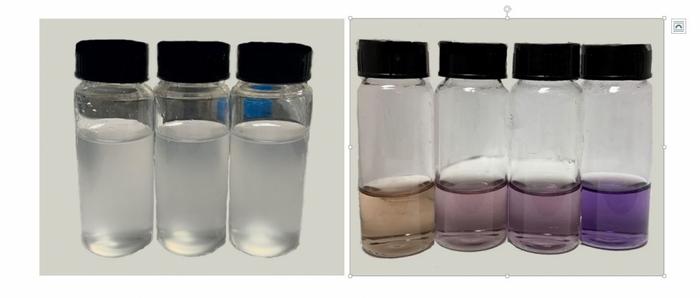Researchers at São Paulo State University (UNESP) in Brazil have developed a strategy for removing glyphosate, one of the world’s most frequently used herbicides, from water. Inspired by the concept of the circular economy, the technique is based on sugarcane bagasse, a waste material produced by sugar and ethanol plants.
“Isolated and chemically functionalized sugarcane bagasse fibers can be used as adsorbent material. Glyphosate adheres to its surface and is removed as a water contaminant by filtration, decantation or centrifugation,” Maria Vitória Guimarães Leal, told Agência FAPESP. She is the first author of an article on the research published in the journal Pure and Applied Chemistry. Adsorption is a process whereby molecules dispersed in a liquid or gaseous medium adhere to a solid insoluble surface, which is typically porous.
Owing to its low cost and high potential to raise crop yields, glyphosate is widely used to control the growth of unwanted plants, such as weeds, invasive species and agricultural pests, but scientific studies have shown that it can be a human health hazard and in particular may pose a cancer risk. Application of glyphosate-containing products is restricted or banned in Austria, Bulgaria, Colombia, Costa Rica, Denmark, El Salvador, Germany and Greece, among other countries. In Brazil, however, annual use of such products averages 173,150.75 metric tons. Part of them is borne away by rain into rivers, wells and other aquatic environments.
With FAPESP’s support via three projects (14/50869-6, 20/06577-1 and 21/09773-9), scientists at UNESP’s School of Sciences and Technology (FCT) in Presidente Prudente found a way to remove glyphosate products from water in research led by postdoctoral fellow Guilherme Dognani and Aldo Eloizo Job, a professor at FCT-UNESP.
How it works
Dognani explained the procedure. “The bagasse is shredded and the cellulose isolated by separating it from the hemicellulose and lignin. The cellulose fibers are then functionalized by adding quaternary ammonia groups to their surface so that the material is positively charged. The resulting cationic cellulose microfibers bind easily to glyphosate,” he said.
Leal added that there are certain favorable conditions, such as pH variation, which was the focus of the study. “When pH is varied, both the adsorbent material and the glyphosate display different molecular configurations. The most efficient level for interaction between them, inducing the most adsorption and hence optimal removal, is pH 14,” he said.
To evaluate adsorption capacity, the researchers prepared fractions of a glyphosate solution with pH 2, 6, 10 and 14, measured using a pH meter. They then added to each fraction identical amounts of functionalized cellulose microfiber. The flasks with the solution contaminated by glyphosate plus cellulose were agitated for 24 hours. In accordance with the procedure described in the literature, they were then heated in a water bath until the reaction occurred, cooled to room temperature and analyzed by visible light spectrophotometry. Removal efficiency was calculated as a ratio of initial to final glyphosate levels in each sample, and adsorption capacity was calculated as a function of pH.
About São Paulo Research Foundation (FAPESP)
The São Paulo Research Foundation (FAPESP) is a public institution with the mission of supporting scientific research in all fields of knowledge by awarding scholarships, fellowships and grants to investigators linked with higher education and research institutions in the State of São Paulo, Brazil. FAPESP is aware that the very best research can only be done by working with the best researchers internationally. Therefore, it has established partnerships with funding agencies, higher education, private companies, and research organizations in other countries known for the quality of their research and has been encouraging scientists funded by its grants to further develop their international collaboration. You can learn more about FAPESP at www.fapesp.br/en and visit FAPESP news agency at www.agencia.fapesp.br/en to keep updated with the latest scientific breakthroughs FAPESP helps achieve through its many programs, awards and research centers. You may also subscribe to FAPESP news agency at http://agencia.fapesp.br/subscribe.
Journal
Pure and Applied Chemistry
DOI
10.1515/pac-2022-1205
Article Title
pH dependence of glyphosate adsorption from aqueous solution using a cationic cellulose microfibers (cCMF) biosorbent
Article Publication Date
27-Jun-2023







































